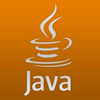这篇文章主要介绍了C++实现LeetCode(7.翻转整数),本篇文章通过简要的案例,讲解了该项技术的了解与使用,以下就是详细内容,需要的朋友可以参考下
[LeetCode] 7. Reverse Integer 翻转整数
Given a 32-bit signed integer, reverse digits of an integer.
Example 1:
Input: 123
Output: 321
Example 2:
Input: -123
Output: -321
Example 3:
Input: 120
Output: 21
Note:
Assume we are dealing with an environment which could only store integers within the 32-bit signed integer range: [−231, 231 − 1]. For the purpose of this problem, assume that your function returns 0 when the reversed integer overflows.
解法一:
class Solution {
public:
int reverse(int x) {
int res = 0;
while (x != 0) {
if (abs(res) > INT_MAX / 10) return 0;
res = res * 10 + x % 10;
x /= 10;
}
return res;
}
};在贴出答案的同时,OJ 还提了一个问题 To check for overflow/underflow, we could check if ret > 214748364 or ret < –214748364 before multiplying by 10. On the other hand, we do not need to check if ret == 214748364, why? (214748364 即为 INT_MAX / 10)
为什么不用 check 是否等于 214748364 呢,因为输入的x也是一个整型数,所以x的范围也应该在 -2147483648~2147483647 之间,那么x的第一位只能是1或者2,翻转之后 res 的最后一位只能是1或2,所以 res 只能是 2147483641 或 2147483642 都在 int 的范围内。但是它们对应的x为 1463847412 和 2463847412,后者超出了数值范围。所以当过程中 res 等于 214748364 时, 输入的x只能为 1463847412, 翻转后的结果为 2147483641,都在正确的范围内,所以不用 check。
我们也可以用 long 型变量保存计算结果,最后返回的时候判断是否在 int 返回内,但其实题目中说了只能存整型的变量,所以这种方法就只能当个思路扩展了,参见代码如下:
解法二:
class Solution {
public:
int reverse(int x) {
long res = 0;
while (x != 0) {
res = 10 * res + x % 10;
x /= 10;
}
return (res > INT_MAX || res < INT_MIN) ? 0 : res;
}
};到此这篇关于C++实现LeetCode(7.翻转整数)的文章就介绍到这了,更多相关C++实现翻转整数内容请搜索编程学习网以前的文章希望大家以后多多支持编程学习网!
本文标题为:C++实现LeetCode(7.翻转整数)


基础教程推荐
- C利用语言实现数据结构之队列 2022-11-22
- C/C++编程中const的使用详解 2023-03-26
- C语言 structural body结构体详解用法 2022-12-06
- C++中的atoi 函数简介 2023-01-05
- C++使用easyX库实现三星环绕效果流程详解 2023-06-26
- C语言基础全局变量与局部变量教程详解 2022-12-31
- C++详细实现完整图书管理功能 2023-04-04
- 如何C++使用模板特化功能 2023-03-05
- 一文带你了解C++中的字符替换方法 2023-07-20
- 详解c# Emit技术 2023-03-25

















